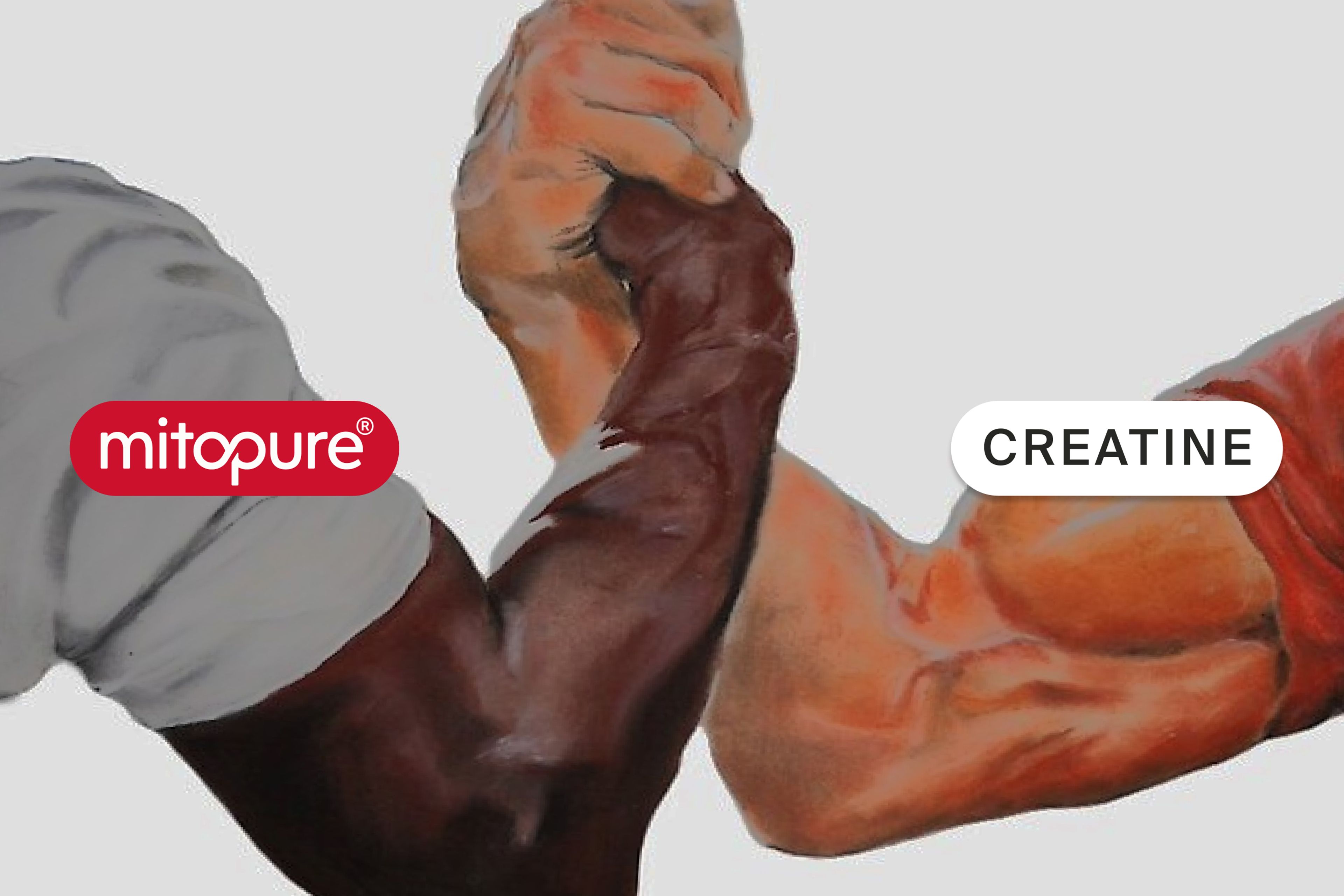Comparing NMN, NR, and Urolithin A for Healthy Aging
How do different longevity products compare? Read on to learn about Mitopure®as an energizing alternative for NR and NMN supplements.
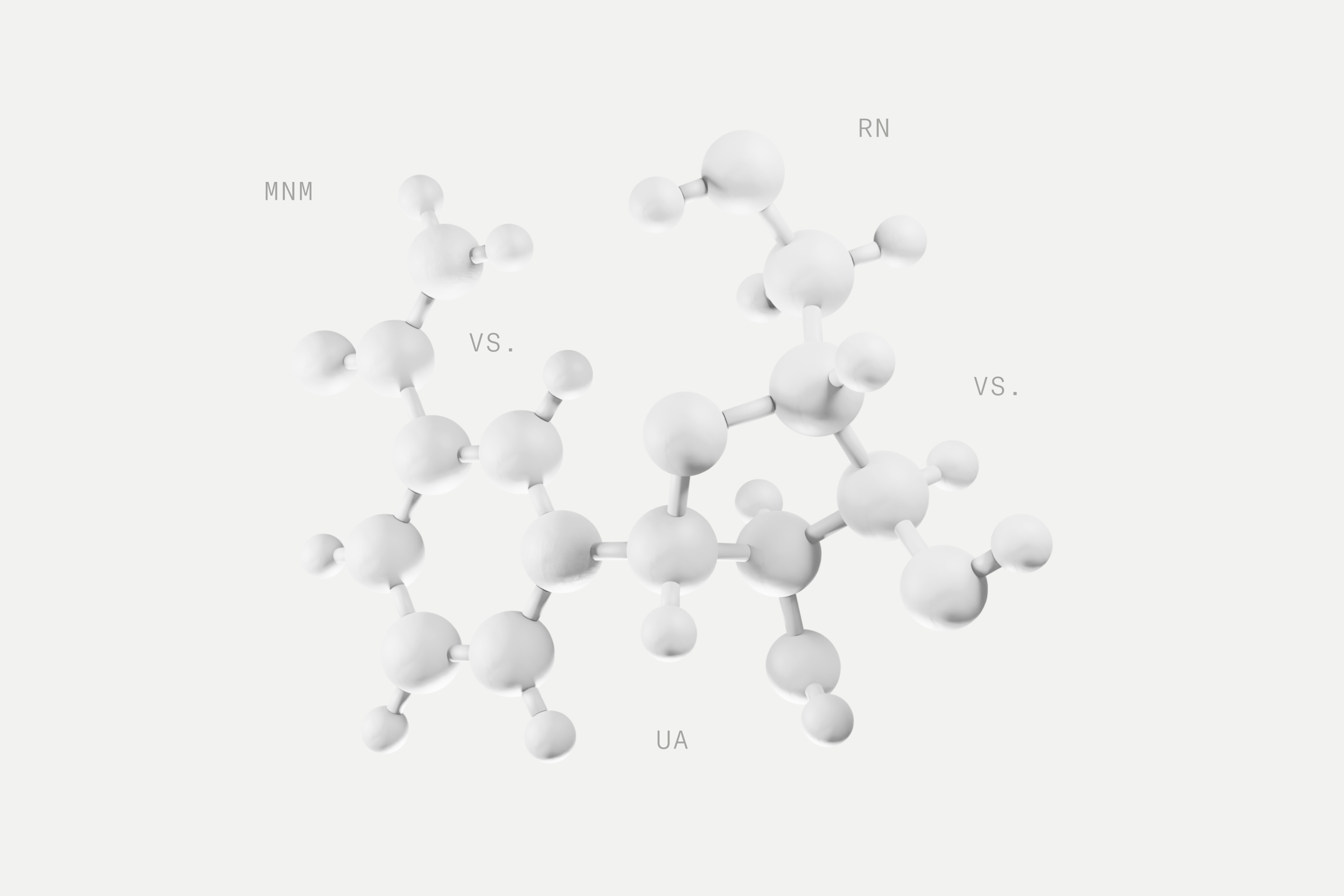
What to know
NAD precursors nicotinamide mononucleotide (NMN) and nicotinamide riboside (NR) work to elevate levels of NAD in the body.
NMN has been shown to be useful when it comes to addressing various age-induced conditions, but further clinical investigations on its effectiveness and safety are needed.
NR may help when it comes to neuroinflammation, fibrosis, and aging, but more research in humans is needed, and safety concerns need to be addressed.
Unlike Spermidine, Urolithin A (UA) is a postbiotic molecule that improves mitochondrial health. Based on clinical trials, compared to NAD precursors, it may be a safer alternative for health promotion.
Longevity supplements under the microscope: Differences of NMN, UA, and NR
Aging is an inevitable part of life, but that doesn’t mean we have to sit back and accept its effect on our health. More and more people are turning to longevity supplements to help combat age-related concerns, and NAD+ precursors, such as NMN and NR, are popular examples.
Recently NAD+ precursors have made headlines due to a recent decision by the FDA to ban sales of NMN as a dietary supplement. With so much buzz surrounding these supplements, it’s important to take a closer look at the scientific research behind them and see how they compare to other longevity supplements such as Mitopure®.
If you are curious about the truth behind these supplements, keep reading - we’ve got all the answers you need.

What are NAD+ precursors?
NAD+ precursors are commonly used supplements to help promote longevity and cellular energy. They help to increase the levels of NAD+ in the body. NAD+ stands for nicotinamide adenine dinucleotide, and it is a compound in the body that plays an important role in several metabolic processes within the cell. One key role is in turning the food we eat into energy.
Levels of NAD+ decline with age, and this is associated with impaired energy production in the mitochondria of the cell, oxidative stress, DNA damage, cognitive impairment, and inflammatory conditions.[1] Increasing NAD+ levels may slow mitochondrial decline and improve health with age.
There are several known precursors to NAD+, such as nicotinamide mononucleotide (NMN) and nicotinamide riboside (NR), which may slow the aging process by elevating levels of NAD+ in the body. These two precursors are especially desirable as fewer unfavorable side effects have been reported when compared to others.[2]
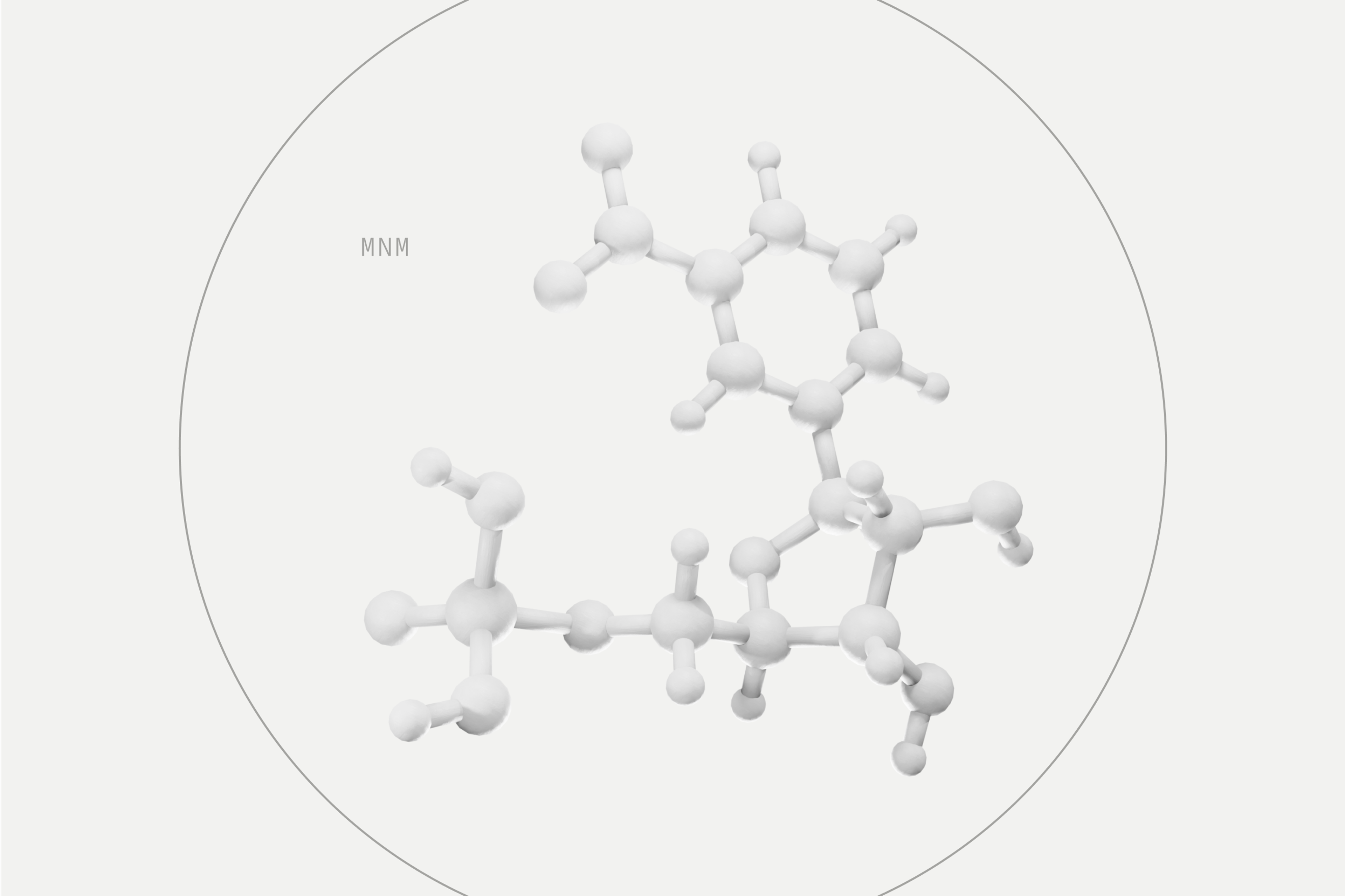
NMN
Nicotinamide mononucleotide (NMN) is a compound that is naturally present in many plant and animal food sources.[4] NMN-based products are taken for anti-aging purposes, given its ability to elevate NAD+ in the body. Studies in rodents have shown that NMN’s benefits apply to various tissues in the body, including the heart, liver, pancreas, arteries, muscle, kidney, liver, and brain.[5]
Human trials indicate that NMN supplementation may be useful when it comes to addressing various age-induced complications.[6] NMN may offer a benefit in conditions that have a deficiency of NAD+, including diabetes,[7] cardiac ischemia,[8] and Alzheimer’s disease.[9] One of the reasons for this is the link between age-related diseases and mitochondrial dysfunction and the ability of NMN to improve mitochondrial function.[10]
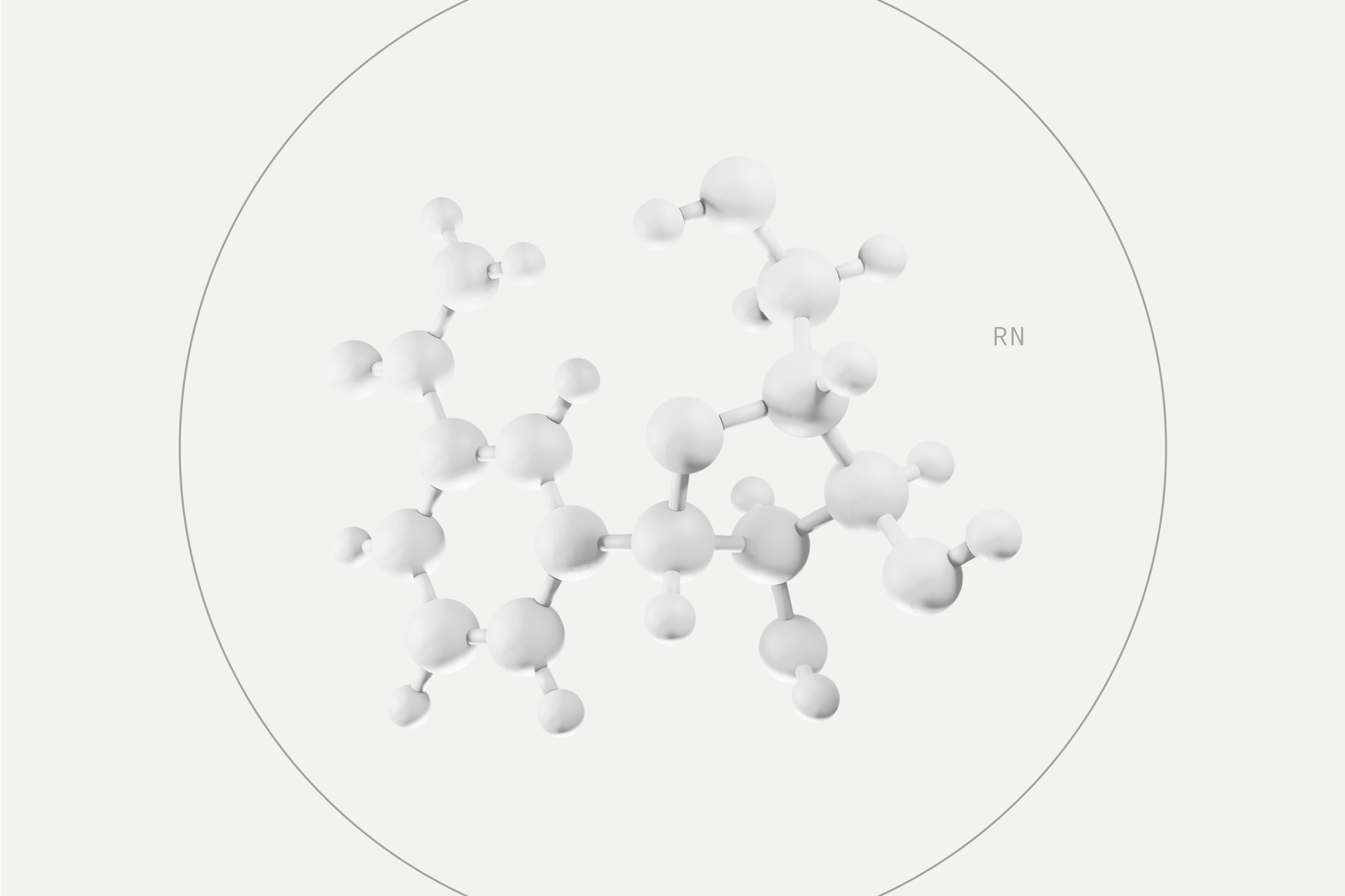
NR
Nicotinamide riboside (NR) is a newly discovered form of vitamin B3.[16] In yeast, initial studies demonstrated that NR has the ability to increase levels of NAD+ in the body and to extend the lifespan without caloric restriction. [17]Human studies have confirmed that NR supplements elevate levels of NAD+.[18]
Studies have also examined the role NR plays in promoting health and preventing disease. Research in animals has demonstrated a potential role for NR when it comes to neuroinflammation, fibrosis, and aging, but more research in humans is needed.[19]

Safety & side effects
As an influx of supplements containing NAD+ precursor molecules has flooded the market, some questions around safety have been brought to light.
Recently, the FDA has authorized NMN for investigation as a new drug and has stated that it may not be marketed as a dietary supplement.[21] Researchers have noted a need for proper clinical investigations on its effectiveness and safety. They feel that additional studies in humans are needed to better understand the toxicology, pharmacology, and safety profiles of NMN.[22]
While NR has demonstrated potential when it comes to addressing age-related disease, some concerns have been raised in regard to safety. Recent research revealed that taking high doses of NR in supplement form may increase the risk of a particular type of breast cancer and may cause the cancer to metastasize to the brain.[23] NR increases levels of cellular energy, and this energy appears to feed cancer cells.
Another recent study looked at giving people 1 gram of NR for five months. While at the end of the trial, the subjects showed some positive impacts, such as increased NAD in the blood, more mitochondria in the skeletal muscle, and more muscle stem cells, there were some concerns with this study as well.[24]
This study did not look at the risk of excessive cell proliferation or uncontrolled cell growth, which may be of concern with NR’s potential risk for cancer. Another concern in this study was that body weight, and fat tissue content significantly increased with NR supplementation, and insulin sensitivity decreased as compared to the baseline data.[25]
It should be noted that the 1-gram dose of NR used in this study is higher than most commercially available products. Still, these potential risks must be considered when selecting an appropriate longevity supplement.
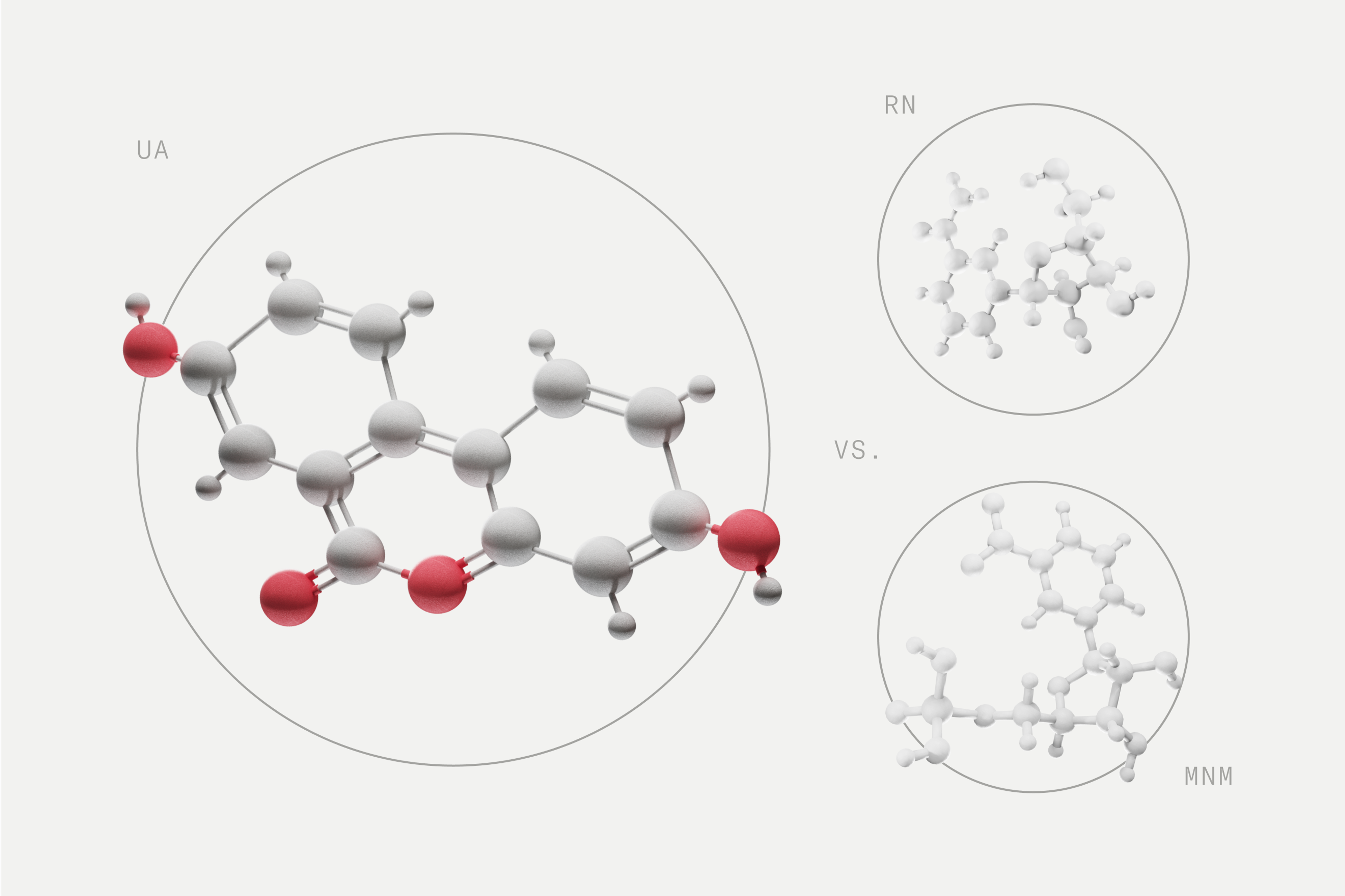
How do NAD precursors compare to Urolithin A?
NAD+ precursors promote health in aging by promoting an increase in NAD+ levels, which is important for cell growth, energy metabolism, and other functions.[26] These precursors enter the cells and are transformed into NAD+.[27]
Urolithin A (UA) is produced in the gut after ingesting antioxidants from foods such as walnuts and pomegranates. It can also be taken in supplement form. Mitopure, for example, is a highly pure form of UA with a clinically tested precise dose. UA supports energy production to combat age-related cellular function decline but does so in a way different from NAD+ precursors.

Mitopure Softgels
Bestseller4.4 · 3124 reviews
The simplest form of Mitopure
One way UA promotes cellular health is by increasing mitophagy or the removal of damaged mitochondria. This is important because there is an impairment of mitophagy during the aging process and with diseases associated with aging.[28] Increasing levels of mitophagy has been identified as a way to promote the health of our organs with age.[29]
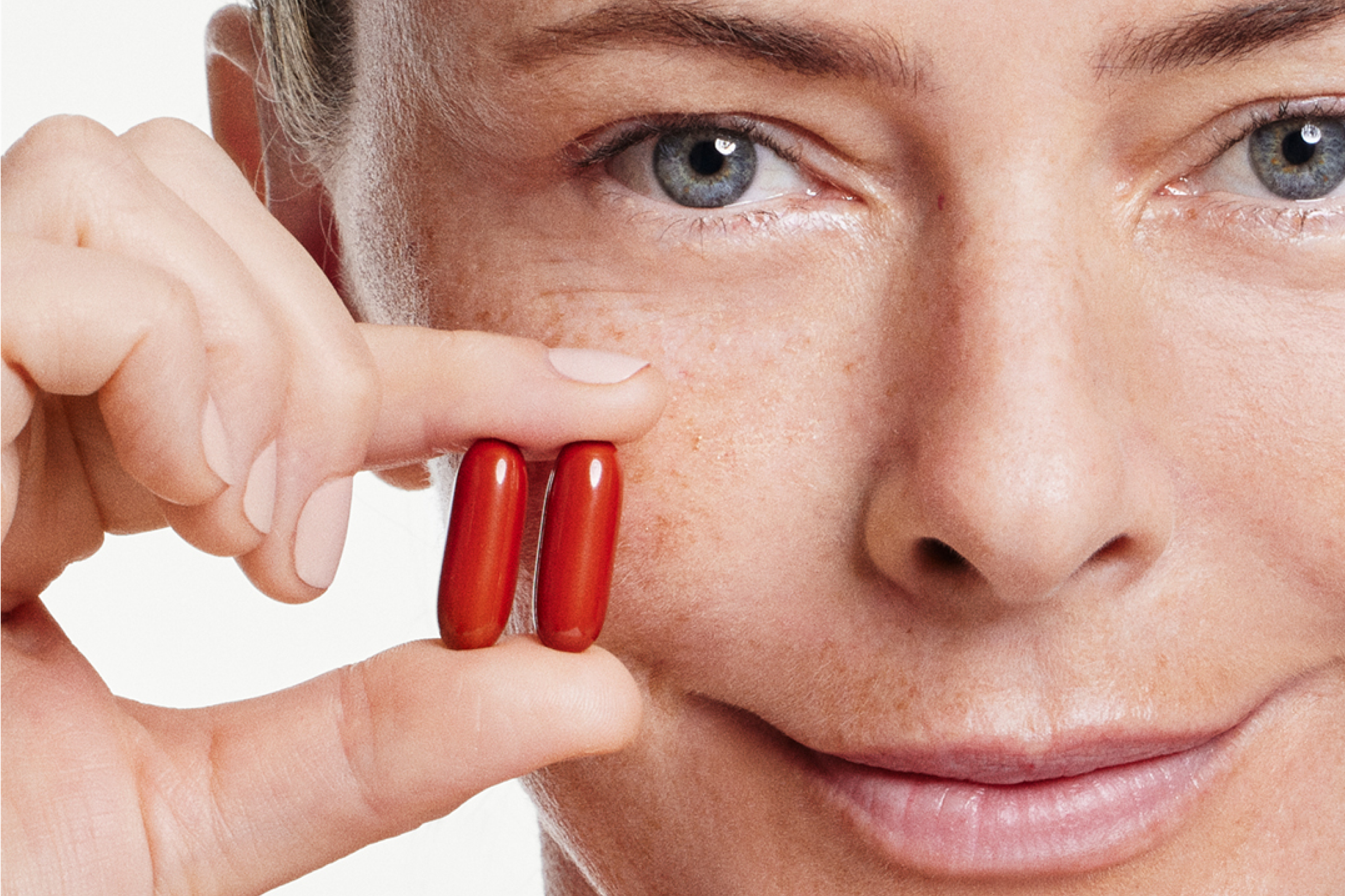
Mitopure® - A safe NMN alternative
Clinical trials have shown that Mitopure increases biomarkers associated with improved mitochondrial health, such as mitophagy and mitochondrial respiration. It also reduces markers of inflammation, including C-reactive protein, which is characteristic of aging and age-related conditions.[32] This is important since both mitochondrial dysfunction and chronic, low-grade inflammation - termed “inflammaging” - are hallmarks of aging.[33]
Several trials have been conducted in humans, demonstrating that Mitopure is safe and well tolerated.[34] No adverse effects have been reported in clinical trials.[35]
Mitopure’s safety profile and impressive clinically demonstrated benefits make it a great choice for those looking to improve their mitochondrial health and support healthy aging.
Authors

Writter
Professor of Nutrition & Scientific Writer
References
- ↑
Nadeeshani H, Li J, Ying T, Zhang B, Lu J. Nicotinamide mononucleotide (NMN) as an anti-aging health product - Promises and safety concerns. J Adv Res. 2021 Aug 11;37:267-278. doi: 10.1016/j.jare.2021.08.003. PMID: 35499054; PMCID: PMC9039735.
- ↑
Cantó C., Houtkooper R.H., Pirinen E., Youn D.Y., Oosterveer M.H., Cen Y., Fernandez-Marcos P.J., Yamamoto H., Andreux P.A., Cettour-Rose P., et al. The NAD(+) precursor nicotinamide riboside enhances oxidative metabolism and protects against high-fat diet-induced obesity. Cell Metab. 2012;15:838–847. doi: 10.1016/j.cmet.2012.04.022.
- ↑
Cantó C., Houtkooper R.H., Pirinen E., Youn D.Y., Oosterveer M.H., Cen Y., Fernandez-Marcos P.J., Yamamoto H., Andreux P.A., Cettour-Rose P., et al. The NAD(+) precursor nicotinamide riboside enhances oxidative metabolism and protects against high-fat diet-induced obesity. Cell Metab. 2012;15:838–847. doi: 10.1016/j.cmet.2012.04.022.
- ↑
Nadeeshani H, Li J, Ying T, Zhang B, Lu J. Nicotinamide mononucleotide (NMN) as an anti-aging health product - Promises and safety concerns. J Adv Res. 2021 Aug 11;37:267-278. doi: 10.1016/j.jare.2021.08.003. PMID: 35499054; PMCID: PMC9039735.
Poddar SK, Sifat AE, Haque S, Nahid NA, Chowdhury S, Mehedi I. Nicotinamide Mononucleotide: Exploration of Diverse Therapeutic Applications of a Potential Molecule. Biomolecules. 2019 Jan 21;9(1):34. doi: 10.3390/biom9010034. PMID: 30669679; PMCID: PMC6359187.
- ↑
Soma M, Lalam SK. The role of nicotinamide mononucleotide (NMN) in anti-aging, longevity, and its potential for treating chronic conditions. Mol Biol Rep. 2022 Oct;49(10):9737-9748. doi: 10.1007/s11033-022-07459-1. Epub 2022 Apr 20. PMID: 35441939.
- ↑
Nadeeshani H, Li J, Ying T, Zhang B, Lu J. Nicotinamide mononucleotide (NMN) as an anti-aging health product - Promises and safety concerns. J Adv Res. 2021 Aug 11;37:267-278. doi: 10.1016/j.jare.2021.08.003. PMID: 35499054; PMCID: PMC9039735.
- ↑
Yoshino J., Mills K.F., Yoon M.J., Imai S. Nicotinamide mononucleotide, a key NAD(+) intermediate, treats the pathophysiology of diet- and age-induced diabetes in mice. Cell Metab. 2011;14:528–536. doi: 10.1016/j.cmet.2011.08.014.
- ↑
Yamamoto T., Byun J., Zhai P., Ikeda Y., Oka S., Sadoshima J. Nicotinamide Mononucleotide, an Intermediate of NAD+ Synthesis, Protects the Heart from Ischemia and Reperfusion. PLoS ONE. 2014;9:e98972. doi: 10.1371/journal.pone.0098972.
- ↑
Long A.N., Owens K., Schlappal A.E., Kristian T., Fishman P.S., Schuh R.A. Effect of nicotinamide mononucleotide on brain mitochondrial respiratory deficits in an Alzheimer’s disease-relevant murine model. BMC Neurol. 2015;15:19. doi: 10.1186/s12883-015-0272-x.
- ↑
Soma M, Lalam SK. The role of nicotinamide mononucleotide (NMN) in anti-aging, longevity, and its potential for treating chronic conditions. Mol Biol Rep. 2022 Oct;49(10):9737-9748. doi: 10.1007/s11033-022-07459-1. Epub 2022 Apr 20. PMID: 35441939.
- ↑
Nadeeshani H, Li J, Ying T, Zhang B, Lu J. Nicotinamide mononucleotide (NMN) as an anti-aging health product - Promises and safety concerns. J Adv Res. 2021 Aug 11;37:267-278. doi: 10.1016/j.jare.2021.08.003. PMID: 35499054; PMCID: PMC9039735.
- ↑
Yoshino J., Mills K.F., Yoon M.J., Imai S. Nicotinamide mononucleotide, a key NAD(+) intermediate, treats the pathophysiology of diet- and age-induced diabetes in mice. Cell Metab. 2011;14:528–536. doi: 10.1016/j.cmet.2011.08.014.
- ↑
Yamamoto T., Byun J., Zhai P., Ikeda Y., Oka S., Sadoshima J. Nicotinamide Mononucleotide, an Intermediate of NAD+ Synthesis, Protects the Heart from Ischemia and Reperfusion. PLoS ONE. 2014;9:e98972. doi: 10.1371/journal.pone.0098972.
- ↑
Long A.N., Owens K., Schlappal A.E., Kristian T., Fishman P.S., Schuh R.A. Effect of nicotinamide mononucleotide on brain mitochondrial respiratory deficits in an Alzheimer’s disease-relevant murine model. BMC Neurol. 2015;15:19. doi: 10.1186/s12883-015-0272-x.
- ↑
Soma M, Lalam SK. The role of nicotinamide mononucleotide (NMN) in anti-aging, longevity, and its potential for treating chronic conditions. Mol Biol Rep. 2022 Oct;49(10):9737-9748. doi: 10.1007/s11033-022-07459-1. Epub 2022 Apr 20. PMID: 35441939.
- ↑
Sharma C, Donu D, Cen Y. Emerging Role of Nicotinamide Riboside in Health and Diseases. Nutrients. 2022 Sep 20;14(19):3889. doi: 10.3390/nu14193889. PMID: 36235542; PMCID: PMC9571518.
- ↑
Belenky P, Racette FG, Bogan KL, McClure JM, Smith JS, Brenner C. Nicotinamide riboside promotes Sir2 silencing and extends lifespan via Nrk and Urh1/Pnp1/Meu1 pathways to NAD+. Cell. 2007 May 4;129(3):473-84. doi: 10.1016/j.cell.2007.03.024. PMID: 17482543.
- ↑
Trammell SA, Schmidt MS, Weidemann BJ, Redpath P, Jaksch F, Dellinger RW, Li Z, Abel ED, Migaud ME, Brenner C. Nicotinamide riboside is uniquely and orally bioavailable in mice and humans. Nat Commun. 2016 Oct 10;7:12948. doi: 10.1038/ncomms12948. PMID: 27721479; PMCID: PMC5062546.
Cantó C, Houtkooper RH, Pirinen E, Youn DY, Oosterveer MH, Cen Y, Fernandez-Marcos PJ, Yamamoto H, Andreux PA, Cettour-Rose P, Gademann K, Rinsch C, Schoonjans K, Sauve AA, Auwerx J. The NAD(+) precursor nicotinamide riboside enhances oxidative metabolism and protects against high-fat diet-induced obesity. Cell Metab. 2012 Jun 6;15(6):838-47. doi: 10.1016/j.cmet.2012.04.022. PMID: 22682224; PMCID: PMC3616313.
- ↑
Sharma C, Donu D, Cen Y. Emerging Role of Nicotinamide Riboside in Health and Diseases. Nutrients. 2022 Sep 20;14(19):3889. doi: 10.3390/nu14193889. PMID: 36235542; PMCID: PMC9571518.
- ↑
Sharma C, Donu D, Cen Y. Emerging Role of Nicotinamide Riboside in Health and Diseases. Nutrients. 2022 Sep 20;14(19):3889. doi: 10.3390/nu14193889. PMID: 36235542; PMCID: PMC9571518.
- ↑
Food and Drug Administration. NDI 1259 - B-Nicotinamide Mononucleotide (NMN) from Inner Mongolia Kingdomway Pharmaceutical Limited. Accessed February 6, 2023. Available at https://www.regulations.gov/document/FDA-2022-S-0023-0051 (https://www.regulations.gov/document/FDA-2022-S-0023-0051).
- ↑
Nadeeshani H, Li J, Ying T, Zhang B, Lu J. Nicotinamide mononucleotide (NMN) as an anti-aging health product–promises and safety concerns. Journal of advanced research. 2022 Mar 1;37:267-78.
- ↑
Maric T, Bazhin A, Khodakivskyi P, Mikhaylov G, Solodnikova E, Yevtodiyenko A, Giordano Attianese GMP, Coukos G, Irving M, Joffraud M, Cantó C, Goun E. A bioluminescent-based probe for in vivo non-invasive monitoring of nicotinamide riboside uptake reveals a link between metastasis and NAD+ metabolism. Biosens Bioelectron. 2023 Jan 15;220:114826. doi: 10.1016/j.bios.2022.114826. Epub 2022 Oct 29. PMID: 36371959.
- ↑
Lapatto HAK, Kuusela M, Heikkinen A, Muniandy M, van der Kolk BW, Gopalakrishnan S, Pöllänen N, Sandvik M, Schmidt MS, Heinonen S, Saari S, Kuula J, Hakkarainen A, Tampio J, Saarinen T, Taskinen MR, Lundbom N, Groop PH, Tiirola M, Katajisto P, Lehtonen M, Brenner C, Kaprio J, Pekkala S, Ollikainen M, Pietiläinen KH, Pirinen E. Nicotinamide riboside improves muscle mitochondrial biogenesis, satellite cell differentiation, and gut microbiota in a twin study. Sci Adv. 2023 Jan 13;9(2):eadd5163. doi: 10.1126/sciadv.add5163. Epub 2023 Jan 13. PMID: 36638183; PMCID: PMC9839336.
- ↑
Lapatto HAK, Kuusela M, Heikkinen A, Muniandy M, van der Kolk BW, Gopalakrishnan S, Pöllänen N, Sandvik M, Schmidt MS, Heinonen S, Saari S, Kuula J, Hakkarainen A, Tampio J, Saarinen T, Taskinen MR, Lundbom N, Groop PH, Tiirola M, Katajisto P, Lehtonen M, Brenner C, Kaprio J, Pekkala S, Ollikainen M, Pietiläinen KH, Pirinen E. Nicotinamide riboside improves muscle mitochondrial biogenesis, satellite cell differentiation, and gut microbiota in a twin study. Sci Adv. 2023 Jan 13;9(2):eadd5163. doi: 10.1126/sciadv.add5163. Epub 2023 Jan 13. PMID: 36638183; PMCID: PMC9839336.
- ↑
Lapatto HAK, Kuusela M, Heikkinen A, Muniandy M, van der Kolk BW, Gopalakrishnan S, Pöllänen N, Sandvik M, Schmidt MS, Heinonen S, Saari S, Kuula J, Hakkarainen A, Tampio J, Saarinen T, Taskinen MR, Lundbom N, Groop PH, Tiirola M, Katajisto P, Lehtonen M, Brenner C, Kaprio J, Pekkala S, Ollikainen M, Pietiläinen KH, Pirinen E. Nicotinamide riboside improves muscle mitochondrial biogenesis, satellite cell differentiation, and gut microbiota in a twin study. Sci Adv. 2023 Jan 13;9(2):eadd5163. doi: 10.1126/sciadv.add5163. Epub 2023 Jan 13. PMID: 36638183; PMCID: PMC9839336.
- ↑
Verdin E. NAD+ in aging, metabolism, and neurodegeneration. Science. 2015 Dec 4;350(6265):1208-13.
- ↑
Covarrubias AJ, Perrone R, Grozio A, Verdin E (2021) NAD + metabolism and its roles in cellular processes during ageing.Nat Rev Mol Cell Biol 22(2):119–141. https://doi.org/10.1038/s41580-020-00313-x (https://doi.org/10.1038/s41580-020-00313-x)
- ↑
Palikaras K, Lionaki E, Tavernarakis N. Mechanisms of mitophagy in cellular homeostasis, physiology and pathology. Nature cell biology. 2018 Sep;20(9):1013-22.
- ↑
Covarrubias AJ, Perrone R, Grozio A, Verdin E (2021) NAD + metabolism and its roles in cellular processes during ageing.Nat Rev Mol Cell Biol 22(2):119–141. https://doi.org/10.1038/s41580-020-00313-x (https://doi.org/10.1038/s41580-020-00313-x)
- ↑
Palikaras K, Lionaki E, Tavernarakis N. Mechanisms of mitophagy in cellular homeostasis, physiology and pathology. Nature cell biology. 2018 Sep;20(9):1013-22.
- ↑
Ryu D, Mouchiroud L, Andreux PA, Katsyuba E, Moullan N, Nicolet-dit-Félix AA, Williams EG, Jha P, Lo Sasso G, Huzard D, Aebischer P. Urolithin A induces mitophagy and prolongs lifespan in C. elegans and increases muscle function in rodents. Nature medicine. 2016 Aug;22(8):879-88.
- ↑
D'Amico D, Andreux PA, Valdés P, Singh A, Rinsch C, Auwerx J. Impact of the Natural Compound Urolithin A on Health, Disease, and Aging. Trends Mol Med. 2021 Jul;27(7):687-699. doi: 10.1016/j.molmed.2021.04.009. Epub 2021 May 21. PMID: 34030963.
- ↑
Franceschi C, Garagnani P, Parini P, Giuliani C, Santoro A. Inflammaging: a new immune-metabolic viewpoint for age-related diseases. Nat Rev Endocrinol. 2018 Oct;14(10):576-590. doi: 10.1038/s41574-018-0059-4. PMID: 30046148.
Liu S, D’Amico D, Shankland E, Bhayana S, Garcia JM, Aebischer P, Rinsch C, Singh A, Marcinek DJ. Effect of urolithin A supplementation on muscle endurance and mitochondrial health in older adults: a randomized clinical trial. JAMA network open. 2022 Jan 4;5(1):e2144279-.
- ↑
Singh A, D'Amico D, Andreux PA, Dunngalvin G, Kern T, Blanco-Bose W, Auwerx J, Aebischer P, Rinsch C. Direct supplementation with Urolithin A overcomes limitations of dietary exposure and gut microbiome variability in healthy adults to achieve consistent levels across the population. Eur J Clin Nutr. 2022 Feb;76(2):297-308. doi: 10.1038/s41430-021-00950-1. Epub 2021 Jun 11. PMID: 34117375; PMCID: PMC8821002.
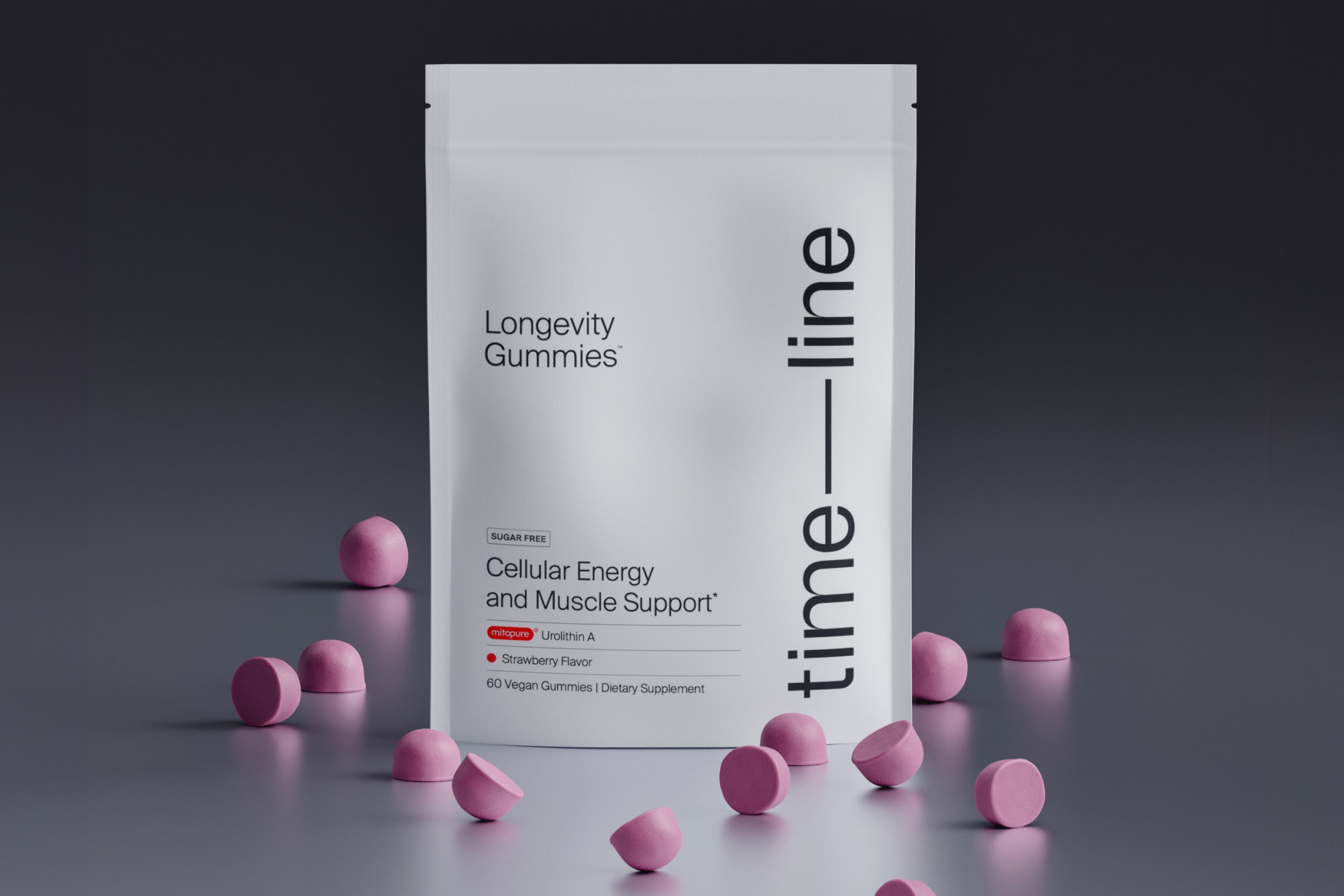
•
Nutrition•
First-of-Its-Kind Longevity Gummy Launched

•
Skincare•






